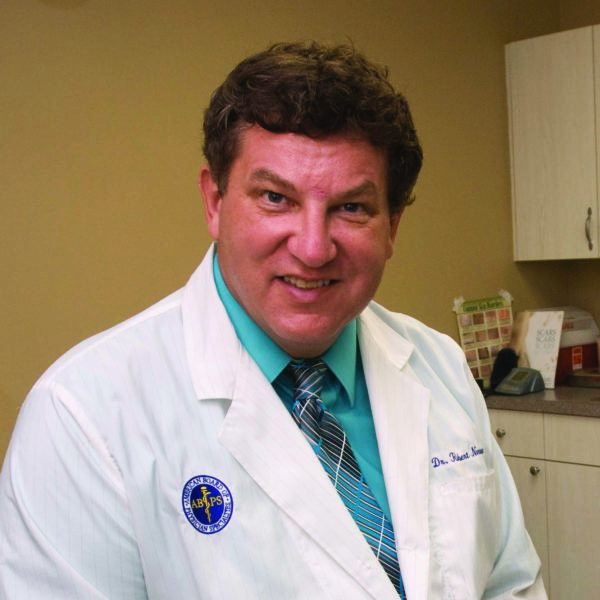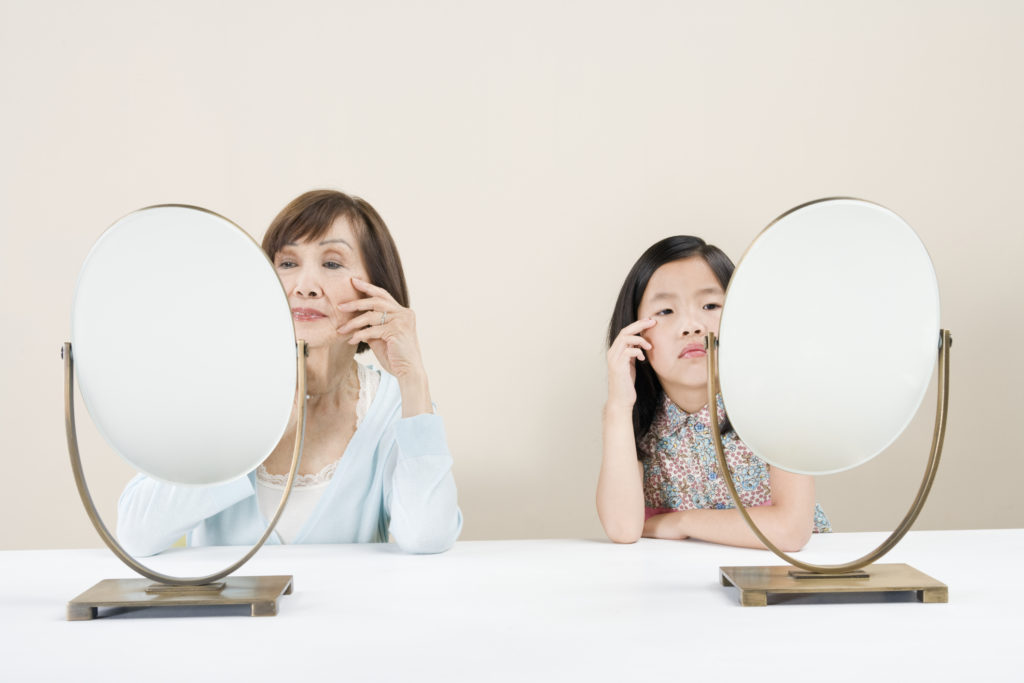By Robert A. Norman, MD
Congratulations. You’ve survived life’s slings and arrows and made it to your senior years. It took some brains. It took common sense. Now is not the time to abandon those assets.
Many older people seem to feel that after navigating past decades of life’s pitfalls, they can cast caution to the winds—especially when it comes to sun exposure. The thinking may go like this: “I’ve never had skin cancer. It takes decades for skin cancer to develop, so I’m never going to get it. I’m moving to Arizona and reveling in the sun.”
The first flaw in that thinking is that none of us know how long we will live; Mickey Mantle, who died of cancer at age 63, famously said, “If I knew I was going to live this long, I’d have taken better care of myself.” We need to keep taking care of ourselves to extend our lives and stay strong and healthy as long as possible.
The average lifespan in the industrial world has been rising steeply. According to the Bureau of Labor Statistics, employment of workers aged 65 or older has grown by 117% in a span of 20 years. Epidemiological, biological and molecular data all point to skin cancer as predominantly a disease of the elderly. At least one in five Americans will develop skin cancer by the age of 70. The majority of people who develop melanoma are white men over age 55. It has also been reported that more than half of skin cancer-related deaths occur in persons more than 65 years old. The longer people live, the more likely they are to develop skin cancer, and the greater their chances of dying from it.
There are many reasons for this. First, most skin cancers result from sun damage over the course of our lives, and seniors have lived longer; they have had the most sun exposure and sustained the most damage from ultraviolet (UV) light. Both sunburns and suntans damage our skin’s DNA, breaking down the skin’s tissues so that it ages before its time, and producing genetic defects that can lead to skin cancer. Suffering just five sunburns over your lifetime more than doubles your chances of developing melanoma, and each successive tan or sunburn raises the risks further. We never know exactly how much damage will trigger a skin cancer, but one bad burn in older age may be the straw that breaks the camel’s back.
Making matters worse, as sun damage mounts, our ability to stave it off keeps diminishing. As we age, our skin undergoes changes that reduce our defenses against skin disease: weaker immune systems, poorer healing capacity, thinner skin and damage from external factors like smoking and pollution. These changes all contribute to accelerated skin aging and increase our risk for skin cancer.
Two types of skin aging exist: intrinsic, or normal chronological aging, which everyone experiences, and extrinsic aging, caused by external factors such as ultraviolet (UV) light exposure (both sunlight and tanning beds), industrial chemicals, human immunodeficiency virus and environmental pollutants. Both play a part in skin cancer.
Intrinsic Aging: In our advanced years, our skin loses fat and water content and becomes thinner, allowing UV light to penetrate more deeply. Compounding the problem, the body’s natural ability to repair damaged DNA diminishes, increasing the likelihood of abnormal cell growth that can cause mutations leading to skin cancer. The overall natural decline in our immune systems not only may allow prior DNA damage to progress to cancer but leaves us more susceptible to cancers from future DNA damage. Many diseases and conditions related to aging contribute to this immune decline. Atherosclerosis, diabetes mellitus and congestive heart failure, for example, are known to impede blood flow and decrease immune responses, reducing the skin’s ability to heal.
Extrinsic Aging: If all that’s not bad enough, we regularly expose our skin to agents that further weaken our defenses. Above all, many older individuals vastly increase their UV exposure, moving to sunnier climes and engaging in more outdoor activities like golf, fishing and tennis. Since UV light itself suppresses the immune system, this exacerbates our natural immune decline and facilitates the development of skin cancer. UV light also breaks down elastic tissue (elastin) in the skin over time, leading to wrinkles, sagging, discoloration and blotchiness.
The skin is especially susceptible to sun damage since it covers the entire surface of the body; it is the first organ to come in direct contact with UV rays. We once thought that most sun damage occurred before age 18, and that this early damage triggered most of the genetic changes that later led to skin precancers and cancers. That left some older people thinking, “The damage is done; there’s nothing I can do about it.” However, subsequent research has shown that we continue to experience substantial UV exposure as long as we live; the majority of exposure occurs after age 40. This later exposure is often what kicks in to contribute to skin cancers, so sun protection remains vital throughout our lives.
Since we know that UV exposure is its primary cause, skin cancer is almost entirely preventable. Fortunately for older people, prevention is not a huge burden. It just takes consistency. Think of it as a three-pronged program: 1) stay out of tanning beds, 2) use effective sun protection, and 3) check your skin. The first part is exceedingly easy: simply never climb into a tanning bed. More people develop skin cancer because of UV tanning than develop lung cancer because of smoking.
Proper sun protection starts with timing: the hours between 10 AM and 4 PM are typically the most UV-intense, so plan outside adventures for early morning or late afternoon. When you do go outside, seek shade from the direct sunlight and wear sun-safe clothing, including a long-sleeved shirt and long pants made of densely woven materials, a hat with a wide brim and UV-blocking sunglasses. Use an SPF 15 or higher broad-spectrum sunscreen (SPF 30+, water-resistant sunscreen for extended or intense outdoor exposure such as on the golf course) and reapply at least every two hours or immediately after swimming or heavy sweating.
It also helps to be aware of your skin type, since fair-skinned people with light-colored eyes and hair (Types I and II) suffer sun damage more easily. Go to SkinCancer.org/quiz to find your skin type.
Finally, along with protecting your skin, watch for suspicious growths. The Skin Cancer Foundation recommends head-to-toe self-examination once a month and an annual visit to a dermatologist for a professional total-body exam. This will give you the best chance of discovering skin cancer at an early, easily treatable stage. As a rule of thumb, look out for anything new, changing or unusual. Pay attention to any growth with an irregular border, multiple colors and increased size or any other notable change. Persistent pain, irritation, itching, bleeding or crusting at any skin site should also be brought to your dermatologist’s attention, as well as any new lesion appearing after age 40.
If you’re concerned about the sun damage you’ve accumulated, a dermatologist can help repair some of it, using techniques such as lasers and photodynamic therapy, dermabrasion and topical medications like retinoids. These treatments help to rejuvenate your skin while also removing precancerous lesions, thereby reducing your risk of skin cancer.
You’ve probably heard more than one older person say something like, “When I was young, no one used sunscreen. It’s too late to change the past, so if I get skin cancer, I get it.” You now know that’s not true; it’s never too late to reduce your skin cancer risk.
Follow our advice, and you will vastly improve your chances of avoiding skin cancer or catching it when it is easily treatable. I also want to emphasize the importance of overall health. Well-balanced nutrition and good habits, for example, help keep your immune system strong so that you can better fight off skin diseases. Also, dangerous habits like smoking, excessive alcohol consumption and drug dependency all contribute to dermatological issues. The bad effects of bad habits add up, increasing your chance of any and all diseases, including skin cancers. So take care of yourself.

About the Expert:
Robert A. Norman, D.O., MPH, MBA, is a board-certified dermatologist practicing in Tampa, Florida.




